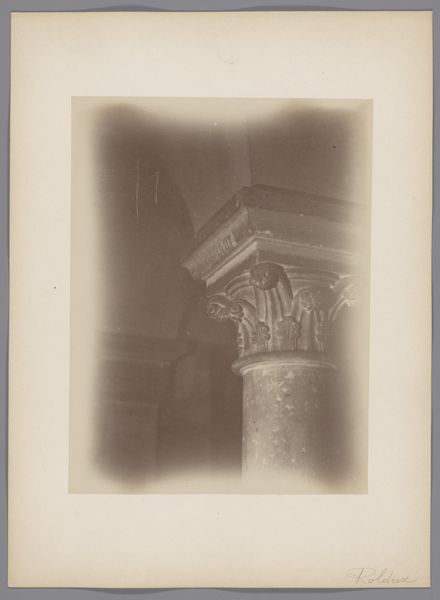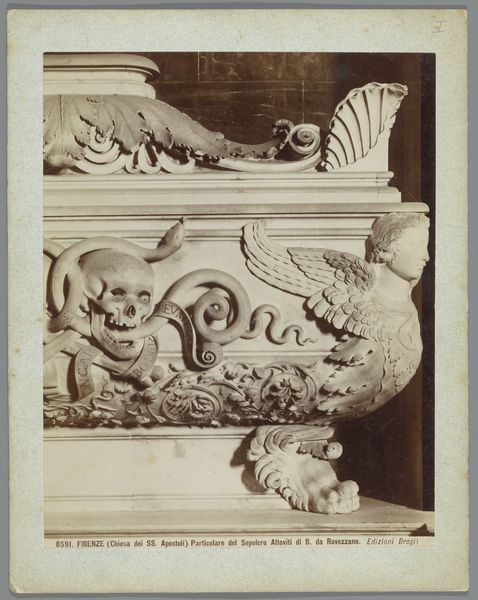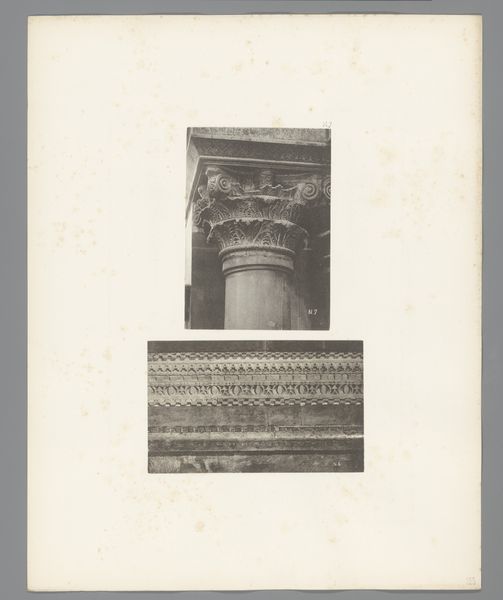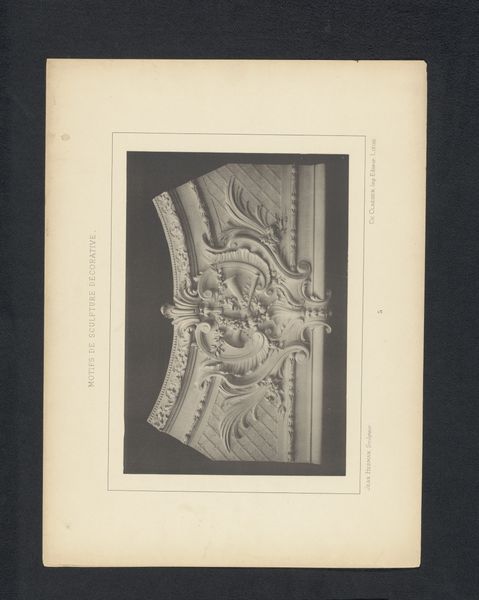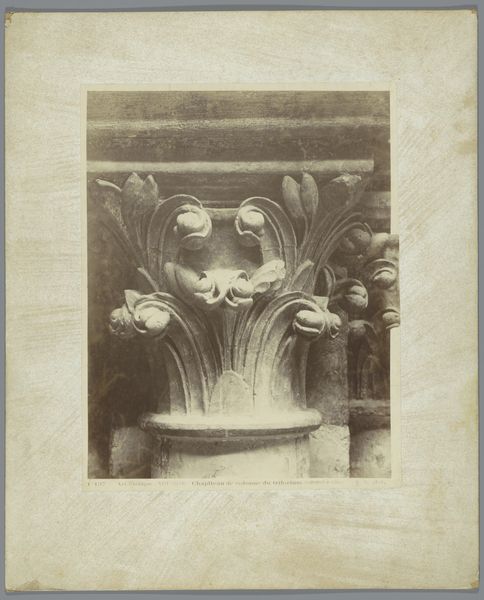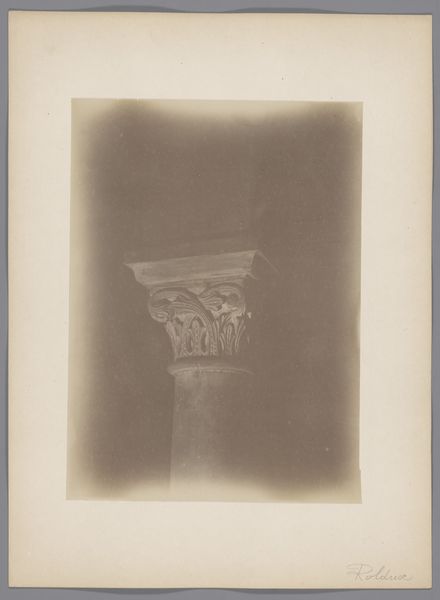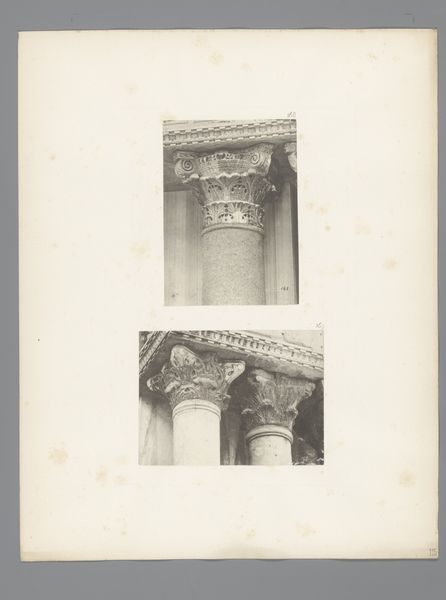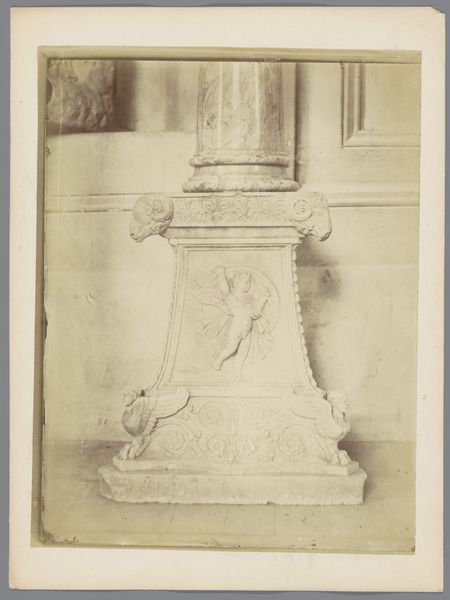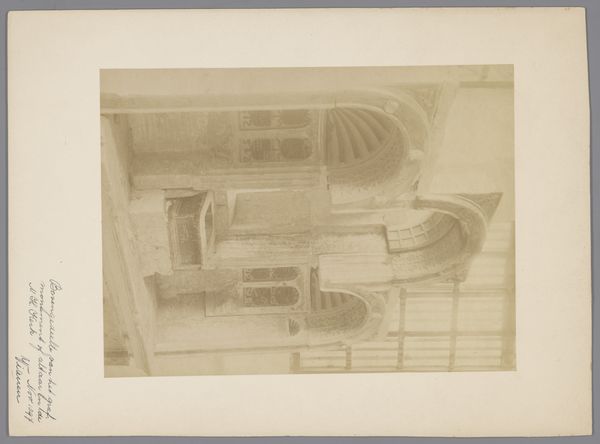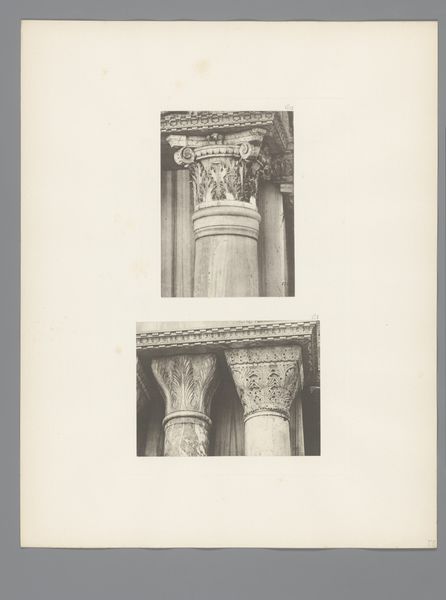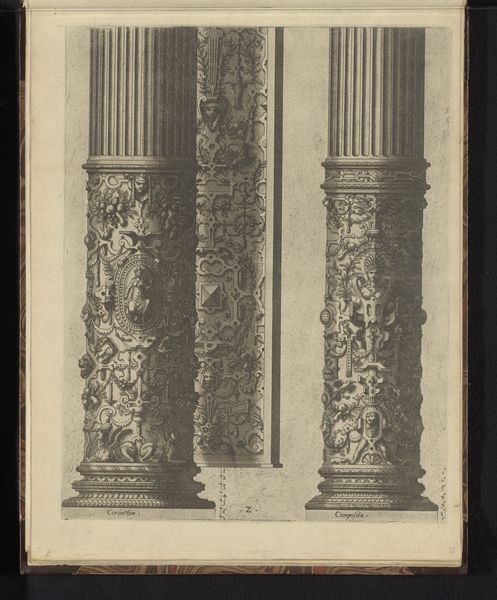
Getordeerde zuil aan de gevel van (vermoedelijk) een kerk te Italië c. 1875 - 1900
0:00
0:00
print, photography
# print
#
photography
#
geometric
#
ancient-mediterranean
#
realism
#
building
Dimensions: height 252 mm, width 186 mm
Copyright: Rijks Museum: Open Domain
Curator: This is an albumen print dating from circa 1875 to 1900 by Gustave Eugène Chauffourier, titled 'Getordeerde zuil aan de gevel van (vermoedelijk) een kerk te Italië', which translates to "Twisted column on the facade of (presumably) a church in Italy". Editor: Ooh, look at that column! It's swirling like a fancy sugar twist. There's something calming and yet totally energetic about that shape, against the static facade. Almost meditative. Curator: Indeed. Spiral columns like these, called Solomonic columns, were often featured in baroque architecture, drawing on motifs with much earlier origins. Considering this image, it prompts reflections on architecture, power, and the construction of religious spaces within society. These elements reflect the Church's claims to spiritual authority but can be interrogated through post-structuralist theory that questions such assumptions. Editor: Authority...right. But also, they’re pretty! I bet light does wonderful things as it curves around that twist. Makes you think of DNA, doesn't it? I wonder if the artist saw a similarity to organic structures, a way to blend the natural and the imposed. The patterns surrounding it give a glimpse into the mind of the architect, who chose to pair geometry and what seems to be flower arrangements. Curator: An interesting perspective! But I would highlight the symbolic connection with ancient traditions. Solomonic columns specifically reference those that once stood in the Temple of Solomon. So it suggests continuity of religious power from ancient Judaism to Christianity through architectural symbols. Editor: Okay, Professor. Symbolism aside, there's a vulnerability in this realism style; the worn facade speaks to something transient, resisting any interpretation of a rigid system of belief that attempts to fixate through symbols. Do you see it too? Curator: I appreciate that observation. It pushes us to consider the temporal fragility of these structures, questioning assumptions of eternal dominance and highlighting social implications for excluded peoples. Editor: Well, I am glad to hear that! All I am trying to do is make a conversation of what feelings an image conjures for myself and potentially for anyone who looks at this piece. Curator: It is important to have all perspectives, so it can serve as a mirror that helps people see a world they never saw.
Comments
No comments
Be the first to comment and join the conversation on the ultimate creative platform.
